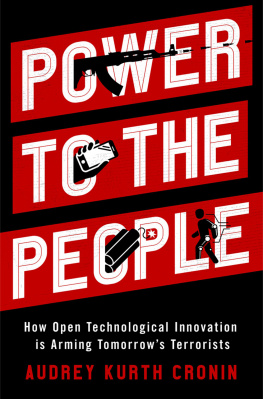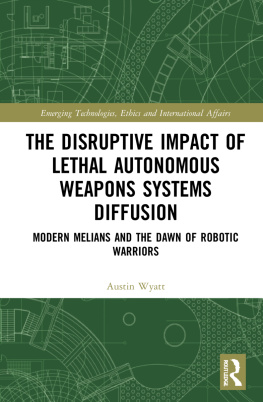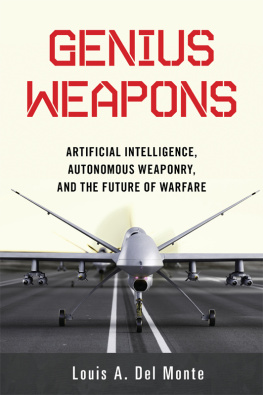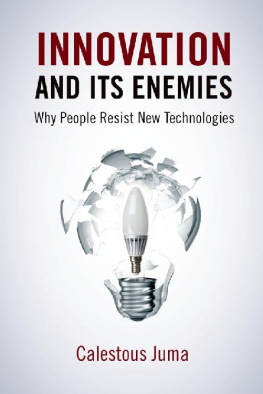Power to the People

Oxford University Press is a department of the University of Oxford. It furthers the Universitys objective of excellence in research, scholarship, and education by publishing worldwide. Oxford is a registered trade mark of Oxford University Press in the UK and certain other countries.
Published in the United States of America by Oxford University Press
198 Madison Avenue, New York, NY 10016, United States of America.
Audrey Kurth Cronin 2020
All rights reserved. No part of this publication may be reproduced, stored in a retrieval system, or transmitted, in any form or by any means, without the prior permission in writing of Oxford University Press, or as expressly permitted by law, by license, or under terms agreed with the appropriate reproduction rights organization. Inquiries concerning reproduction outside the scope of the above should be sent to the Rights Department, Oxford University Press, at the address above.
You must not circulate this work in any other form and you must impose this same condition on any acquirer.
ISBN 9780190882143
eISBN 9780190882167
For Professor Sir Adam Roberts,
who gave power to the pupil.
CONTENTS
We live in an epoch of unprecedented popular empowerment. Increasing access to information, rising global living standards, growing literacy, and improving medical care and longevity are just a handful of the benefits derived from the modern march of technological innovation. Yet the same technologies that are furthering prosperity are creating critical new security vulnerabilities.
The worldwide dispersal of emerging technologies, such as commercial drones, cyber weapons, 3D printing, military robotics, and autonomous systems, is generating gaping fissures in the ability of conventional armed forces to combat lethal capabilities of non-state actors, most notably terrorists, but also rogue lone actors, insurgent groups, and private armies. As these malcontents gain power through emerging technologies, the defenses of the law-abiding are increasingly breached. Traditional rights, such as privacy, property ownership, and freedom of movement, are under unprecedented attack by autocratic regimes, not to mention private companies, which monetize our online behavior. Not only are democratic governments unable to protect innocent citizens from such invasions, they engage in them themselves, reading individuals emails, monitoring their phone calls, tracking their every move online, and consolidating their behavioral data.
Every day we learn of fresh examples of the new breed of technologies being used for malevolent ends or posing potential new dangers. But while weve become aware that intelligence services may be listening to your phone calls and tracking your emails, and that Apple, Facebook, Google, and other Drones and self-driving cars are not only exciting advances for consumers; they are also new means of conducting political violence by militant groups and self-radicalized individuals.
Never before have so many had access to such advanced technologies capable of inflicting death and mayhem. Unless we better understand the rapidly developing threats, governments, especially democracies, will be increasingly unable to combat them.
This book explores how individuals and groups who engage in political violence have repeatedly made use of emerging technologies to wreak havoc, and how theyre likely to do so in the future. Many scholars have argued that such non-state combatants rarely innovate new forms of weaponry; that they are tactically sophisticated but technologically crude. Regarding the danger of more sophisticated weaponry getting into their hands, especially so-called weapons of mass destruction, the focus has been mainly on groups acquiring weapons from states rather than learning to produce their own. That is too limited a purview, conditioned by the experience of the last fifty years. A longer historical view, stretching back to the nineteenth century, reveals that, in fact, terrorists and insurgents have repeatedly seized opportunities presented by new technologies, innovating deadly new uses for them, and sometimes even adopting them ahead of their use by traditional military forces. When clusters of new technologies become widely accessible to the public, their innovations are particularly lethal and fast-spreading. We are in such an era now.
Placing our current technological advances into the historical context of key innovations used to wage politically disruptive violence, this book will first explore why certain kinds of emerging technologies are rapidly adopted by rogue actors. Well then consider how those emerging today are already changing who is able to muster formidable armies and show up on the battlefield, how individual acts of violence can be perpetrated, and even who may gain the ability to catalyze state-to-state wars. Traditional warfare concepts of the massing of force, logistics, and power projectionthe understanding of which has been essentially stable for centuriesmust evolve in the face of novel challenges. Imagine a successor to the Islamic State, for example, teaming small numbers of fighters with autonomous suicide attack vehicles, flying unmanned systems through urban sewer systems, and assassinating key government leaders with facial recognition software, all while using 3D printing to reproduce an endless supply of replacement parts, such as drone blades and motors. Technological advancements are heightening global instability in ways that extend far beyond the battlefield. States will still be the dominant form of governance, but tomorrows question is what kinds of states? New technologies enable increasingly powerful non-state actors to affect the answer. Power is shifting away from democratic states, and they must prepare for, and defend against, the potentially seismic consequences.
The United States is especially vulnerable to being caught on the back foot by this surge of technology and weapons diffusion. The country leads the world in the development of high-tech weaponry, and its defense strategy is predicated on this technological superiority. Yet the effectiveness of that formidable arsenal in the face of emerging threats must be thoroughly re-examined. The failure to win decisive victories in the wars in Afghanistan and Iraq has demonstrated this. Meanwhile a recent re-emergence of major-power competition, particularly between the United States and China, is likely to keep the focus of military planners on large-scale, high-end weapons systems rather than on building capabilities and strategy to defend against more pervasive and less obvious emerging threats.
The US defense community is predominantly focused on competing technologically with state rivals at the high end, while slighting centuries of experience in how violent individuals and groups improvise, sometimes unleashing unexpected waves of political disruption that topple regimes and trigger interstate war. Many of the most revolutionary changes in warfare, the most surprising victories and losses, have occurred as a result not of new technologies on the battlefield, but of broader changes in society affecting who used weaponry, where, when, why, and how. With the maturing of the digital revolution and the beginning of the robotics revolution, we are seeing the combination of rapid technological innovation and that kind of widespread societal














